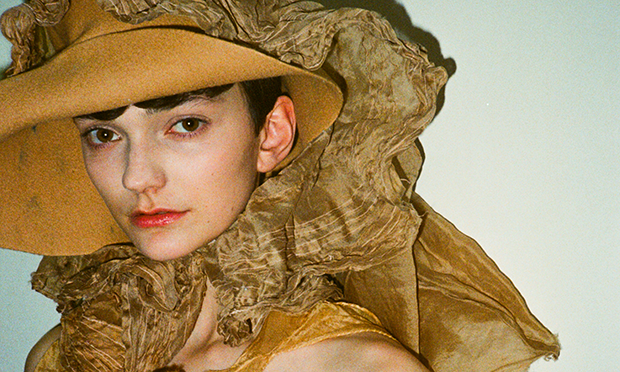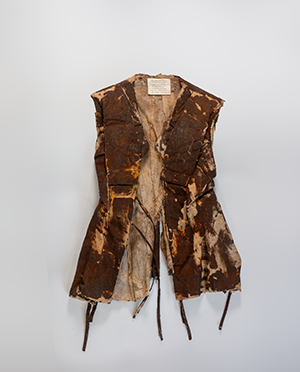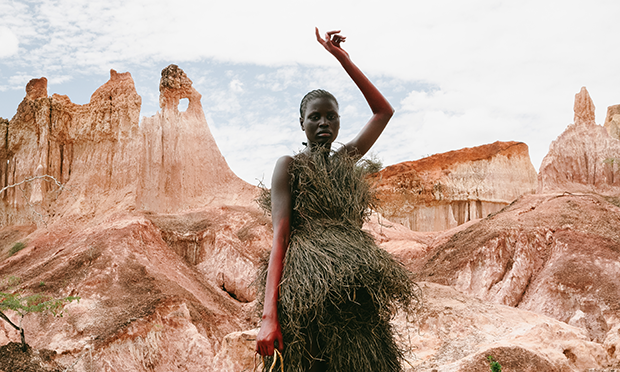Fashion’s obsession with decay spearheads major exhibition at the Barbican

Piero D’Angelo’s Physarum Lab, 2019. Photograph: Ladislav Kyllar
Eight years on from its last major fashion exhibition, the Barbican is back with Dirty Looks, an exploration of the clothing industry’s fascination with decay and how new practices could shape a less wasteful future.
Opening this September, the show brings together iconic fashion houses and designers for a display of more than a hundred looks from the past half-century.
It charts the industry’s obsession with ‘dirty’ aesthetics, from the subversive use of mud by Vivienne Westwood and Malcolm McLaren to Issey Miyaki’s patinas and the rusted dresses of Hussein Chalayan.
Visitors will be shown how these ideas have continued to resurface, from deliberately scuffed trainers to a preoccupation with landscapes such as the bog, as well as a new, more spiritual connection to soil.
A critical eye is also drawn over the way many clothes are consumed today: produced cheaply and thrown away quickly.

Paolo Carzana, Spring/Summer 2025, How to Attract Mosquitoes. Photograph: Joseph Rigby / courtesy Paolo Carzana
Displays from up-and-coming designers focus on how dirt and waste can be harnessed as a positive force for fashion.
Examples of upcycled garments and repurposed ‘deadstock’ – unused or unsold clothes – offer a hopeful glimpse of an industry primed to show more respect for the environment.
The Barbican’s head of visual arts, Shanay Jhaveri, said Dirty Looks “recognises fashion not only as a form of artistic expression, but also as a lens through which to examine cultural, environmental and political urgencies”.

Hussein Chalayan, The Tangent Flows, 1993. Photograph: Ellen Sampson
Highlights include Chalayan’s widely acclaimed 1993 graduate collection, The Tangent Flows, which features garments that were buried with iron filings in his friend’s London garden.
The practice of burial, which involved submerging the clothes in soil for several months, has returned over the course of Chalayan’s career.
His notion of ‘future archaeology’ symbolises the life cycles of fashion.
Three looks from Ma Ke’s handmade collection, Wuyong/The Earth (2006-07), will also be on display, showing how she transformed discarded materials including wood and plastic using ancient crafts practiced by women in rural China.
Bubu Ogisi’s recent creations for IAMISIGO, a Nigerian fashion label, use natural materials in a symbolic act of repairing connection to lands severed by colonialism.

IAMISIGO’s handwoven raffia-cotton blend look, dyed with coffee and mud. Photograph: Fred Odede / courtesy of IAMISIGO
And a bespoke tableau of Paolo Carzana’s three-season narrative, Trilogy of Hope (2024-25), features handcrafted, naturally-dyed garments made from organic and repurposed materials.
Jhaveri added: “This exhibition brings together a remarkable breadth of global designers who are radically reshaping what fashion can mean and do today.
“With its focus on decay, renewal and the aesthetics of imperfection, Dirty Looks invites us to reconsider beauty, value and the regenerative power of making in a world in flux.”
Dirty Looks: Desire and Decay in Fashion runs from 25 September 2025 until 25 January 2026 at the Barbican Art Gallery.
